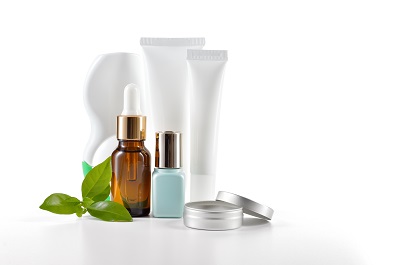Sweet Almond Oil—Clinical Applications
Sweet Almond Oil Profile
Sweet almond oil comes from the seed—it’s not a nut!—of the almond tree with the Latin name Prunus dulcis or Prunus amygdalus.[1][2] The fruit of the almond tree is a drupe that has an outer hull and a hard shell, with the seed—the edible part—inside. That is why many people who are allergic to nuts are sometimes not allergic to almonds; however, you can have an allergy to nuts and almonds together.
The almonds that we consume in our diet are sweet almonds. The reason to add the “sweet” in front of “almonds” is that there are also almonds out there called “bitter almonds,” which contain cyanide. There are some medicinal uses for bitter almonds, but we’ll stick to the sweet variety here.
Almond oil contains a high percentage of monounsaturated oleic acid (omega-9) and linoleic acid (PUFA omega-6). It also contains vitamin E, vitamin A, zinc, and other minerals.[1][2]
According to Chinese medicine, sweet almonds are sweet (shocking!) and neutral (versus cold or warm) in nature, and they moisten the Lung and Large Intestine channels. As such, in Chinese medicine, sweet almonds are used to help with asthma, constipation, and dry cough.
Sweet Almond Oil Internal Uses
Sweet almonds, when ingested, provide dietary fibre and healthy fats that are good for overall health and may be helpful for reducing cholesterol and decreasing the risk of coronary heart disease.[2] Also, almonds, when consumed with foods that are high in carbohydrates, can decrease the spike in blood sugar that happens when we eat carbohydrate-rich foods. For example, if you’re enjoying a few dates or a sugary dessert of some kind, adding in some almonds will help lower the glycemic impact of those foods (as will most other nuts and seeds). This does not mean that having a couple of almonds will nullify the effects of a large amount of sugar when consumed together; it simply means that having a few almonds makes your blood sugar profile slightly better than if you weren’t to have almonds with your dessert, even though the total amount of sugar consumed remains the same.
Internally, food-grade sweet almond oil may help move the bowels, helping with constipation, and decrease irritable bowel syndrome symptoms—possibly due to its emollient effect on the intestinal lining.[1] It has actually been shown to be helpful for rectal prolapse in children as well as pruritus ani (anal itching).[3]
 Sweet Almond Oil External Uses
Sweet Almond Oil External Uses
Externally, sweet almond oil has a soothing and emollient effect. It has anti-inflammatory properties, is full of antioxidants, and is classified as a light oil. Historically, sweet almond oil has been used in Ayurvedic, Persian, and Ancient Chinese medicines to treat dry skin conditions as well as scarring.[1] Clinically and anecdotally, it is able to reduce the visibility of acne scarring, help even out skin tone, and soothe irritated skin.[1] Nowadays, it can be found in many skin-care formulas, ranging from commercial drug-store skin-care products to ones that are more “natural.”
It is considered hypoallergenic, but there have been instances where people sensitive to almonds react to sweet almond oil (in the form of hives) with topical application, especially in infancy when the immune system is still developing.[4]
Ways to Use Sweet Almond Oil Externally
Use it in your daily skin regimen
As a hypoallergenic oil that is easily absorbed into the skin without clogging pores, sweet almond oil is great for your skin if you’re young or old. It is safe for babies to use, and it can even be used on acne-prone skin. It might be too oily to use on its own, but it works well as an addition to your usual moisturizer—apply after cleansing the face by mixing a few drops in with your daily moisturizer. It can be used in the morning or in the evening.
It has actually been shown in rat studies to help protect against UV-B skin damage. A study performed on mice has shown that almond oil applied topically is able to prevent the structural damage caused in the skin when applied prior to exposure.[5]
Use it for eczema and/or psoriasis
Since sweet almond oil contains vitamins A and E as well as zinc, it can help with skin cell turnover, i.e. skin regeneration. Those nutrients, as well as its soothing properties, make it a very effective moisturizer for eczema and psoriasis.
A great way to use sweet almond oil for dry skin conditions such as eczema and psoriasis is to mix it in with shea butter, colloidal oatmeal (if no oatmeal sensitivity exists), and a few drops of lavender essential oil. Shea butter has a dense nutrient profile, oatmeal has wonderful allaying properties, and lavender is great for skin-cell turnover and for soothing the skin.
 Use it for your hair
Use it for your hair
As mentioned above, almond oil is full of vitamins and minerals, which means it makes a wonderful hair mask. You can use the oil on its own by massaging it into the scalp and leaving it on for a few hours before you shower, and you can also use it postshowering to help lock in moisture. Below is a recipe for a nourishing hair mask (often in south-east Asian cultures) that can be applied once a week.
Hair Mask Recipe
1 tbsp. sweet almond oil
1 tbsp. amla oil
Optional: 1 tbsp. coconut oil in the summer,
or 1 tbsp. mustard oil in the winter
Mix the oils together, heat gently for 2 minutes, and massage into the scalp while warm. Leave on for at least 1 hour before shampooing it out. You can also leave it in overnight to be washed out in the morning (make sure to cover your pillow with an old towel for protection).
Sweet almond oil is a good option for your scalp if you suffer from dandruff, which can be due to the fungus Malassezia furfur, since it can help your body mount a better immune response against the fungi; however, walnut oil might be a better option mixed in with some essential oils.[6]
Use it for ear aches and ear wax
Sweet almond oil can be used to help soften ear wax even if there are small nicks inside the ear. It can also be used to make garlic oil for a mild ear infection (consult with a health-care practitioner to make sure you’re not exacerbating a potential serious infection).
 Other Uses
Other Uses
Sweet almond oil can be used for a variety of other purposes such as in scrubs, mixed with sugar, or even finely ground almond bits for scars, mixed with frankincense essential oil and castor oil, and in a variety of different skin-care products such as body lotion and hair serums.
Final Notes
Sweet almond oil is nutrient-dense and can be used internally and externally for a variety of different purposes. When using internally, it is prudent to purchase food-grade sweet almond oil. When using externally, it is beneficial for a host of dry skin conditions and combines well with a variety of different plant-based oils.
References:
- Ahmad, Z. “The uses and properties of almond oil.” Complementary Therapies in Clinical Practice. Vol. 16, No. 1 (2010): 10–12.
- Josse, A.R., et al. “Almonds and postprandial glycemia—A dose-response study.” Metabolism. Vol. 56, No. 3 (2007): 400–404.
- Shafik, A. “A new concept of the anatomy of the anal sphincter mechanism and the physiology of defecation. XXIII. An injection technique for the treatment of idiopathic pruritus ani.” International Surgery. Vol. 75, No. 1 (1990): 43–46.
- Guillet, G., and M.H. Guillet. “Percutaneous sensitization to almond oil in infancy and study of ointments in 27 children with food allergy.” Allergie et Immunologie. Vol. 32, No. 8 (2000): 309–311.
- Sultana, Y., et al. “Effect of pre-treatment of almond oil on ultraviolet B–induced cutaneous photoaging in mice.” Journal of Cosmetic Dermatology. Vol. 6, No. 1 (2007): 14–19.
- Rezaee, M.A., et al. “Natural oils enhance IL-10 and IFN-γ production by human PBMCs cultured with Malassezia furfur.” Iranian Journal of Immunology. Vol. 9, No. 2 (2012): 109–119.

 Stores
Stores